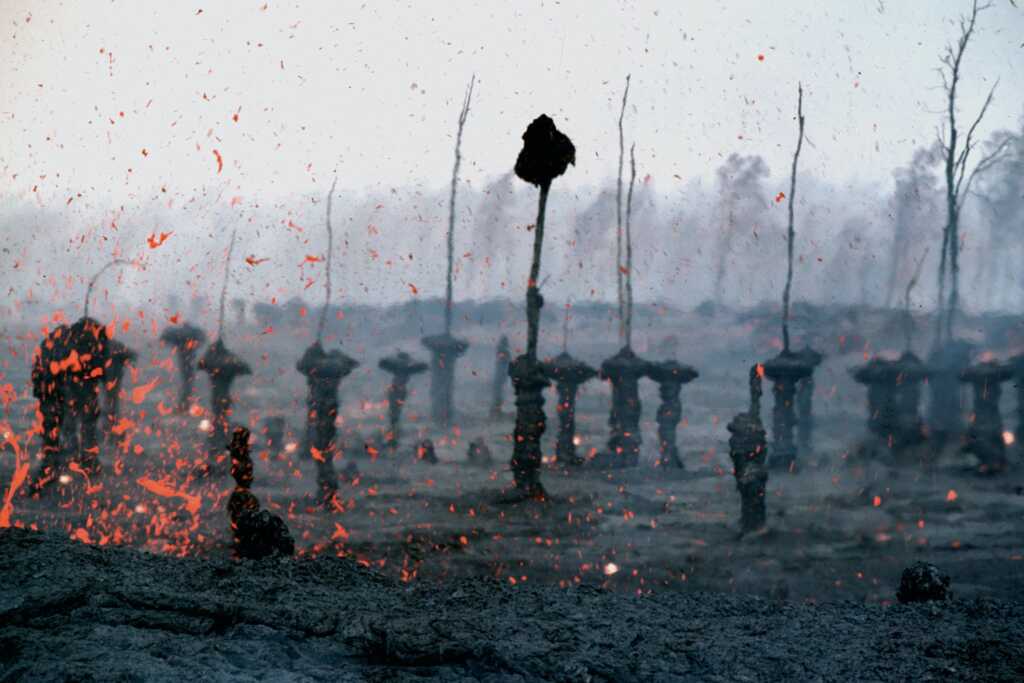As the world deals with the ongoing Coronavirus pandemic, we’re learning new information on other threats to civilization. Beyond pandemics, the world faces natural hazards from asteroids, volcanoes, and even solar storms.
Scenarios like an asteroid hitting earth face pretty long odds. In fact, the likelihood of that happening is literally astronomical. But just in case, the earth has a watchman on the lookout for exactly the kind of threat that wiped out the dinosaurs.
Lindley Johnson is NASA’s planetary defense officer. He says we now have the technology to detect things like asteroids far in advance.
“We believe we have already found all of the near-Earth asteroids that are of that size that can cause the same kind of catastrophe that occurred to the dinosaurs but there are still a few large ones to find out there,” Johnson told CBN News.
Johnson and other planetary defenders have a plan to redirect and asteroid potentially heading for earth. Next summer, NASA will test that capability for the first time by crashing a probe into an asteroid’s moon, knocking it off orbit, and off-course.
“We’ve been given the tools to prevent this ever happening to us again and so we should use them,” Johnson said.
The watchers call scenarios like these “high-impact, low-probability” events.
The 1944 eruption of Mount Vesuvius rained down on the Naples area of Italy some 2,000 years after it destroyed Pompeii.
Geophysicist Michael Poland is with the US Geological Survey.
“How do you coordinate an evacuation of a city of millions?” he said. “There are environments like that all over the world, not just Naples. Environments like that [are] in Indonesia, Philippines. Taal volcano eruption near Manila – if there had been a really large eruption – how do you coordinate a massive evacuation?”
“There’s no stopping a volcano,” Poland continued. “Occasionally we get this question, like ‘why don’t you just drill into the volcano and pump water down there?’ And the scale of the problem is really incomprehensibly big. So, no, you can’t stop a volcano from erupting. You might be able to divert some of the products but the best mitigation methods we have today are to get out of the way.”
In just minutes, the 1980 eruption of Mount St. Helens resulted in 57 lives lost and hundreds of millions of dollars in damage. After destroying every living thing within 230 square miles, the devastation forced the world to take volcano monitoring a little more seriously.
“The science of eruption forecasting certainly has advanced – we can recognize a lot of eruptions that are becoming restless based on earthquakes, ground deformations, gas emissions,” Poland said.
Poland also oversees the Yellowstone Volcano Observatory.
“With Yellowstone, the worst-case scenario is always a tremendous explosion, of the kind that last happened about 631,000 years ago. That was one of these super-eruptions that occur on average maybe every 50-100,000 years somewhere on the planet,” he said.
Scientists think that the worst-case scenario is also the least likely to happen. But if it did, Poland says it would be devastating, but it wouldn’t cause our extinction.
“These sorts of eruptions would be immediately devastating to everything around them out to a radius of hundreds to thousands of kilometers,” he said.
While hundreds of active volcanoes exist around the world, another threat hangs right above our heads.
On July 23, 2012, an eruption on the Sun sent giant particle clouds hurtling through space at 6.7 million miles per hour, missing Earth but passing straight through a satellite in its path.
Dr. Doug Biesecker is a solar physicist with NOAA’s Space Weather Prediction Center.
Biesecker said what keeps him up at night about space weather is missing the forecast of the one in a hundred-year surface storm on the Sun. “The sort of storm that would cause a widespread power outage, you know you could imagine maybe the entire Northeast losing power for at least a few hours if not for a day or more,” Biesecker said.
In 1859, one of these eruptions hit Earth. Now known as the “Carrington Event,” it’s the largest geomagnetic storm on record.
The technology of the day was the telegraph and telegraph operators were able to disconnect their batteries and use the electricity caused by the solar storm to run their systems.
Today, a Carrington-like event would be similar to an electromagnetic pulse, or EMP. In that case, the plan is a temporary power shut off to save the grid.
“In this country, we work very closely with the power grid operators to make sure that we can keep the lights on even in an extreme event,” Biesecker said.
We might not be able to predict or prevent every catastrophe or global disaster, but having early warning systems and a plan is always a good idea.


